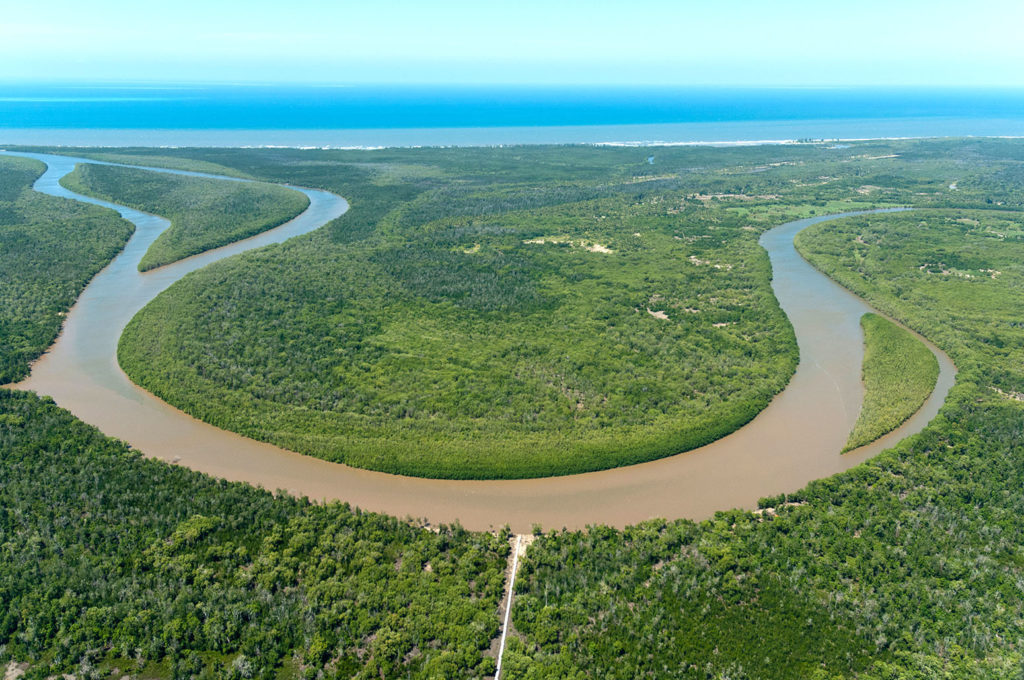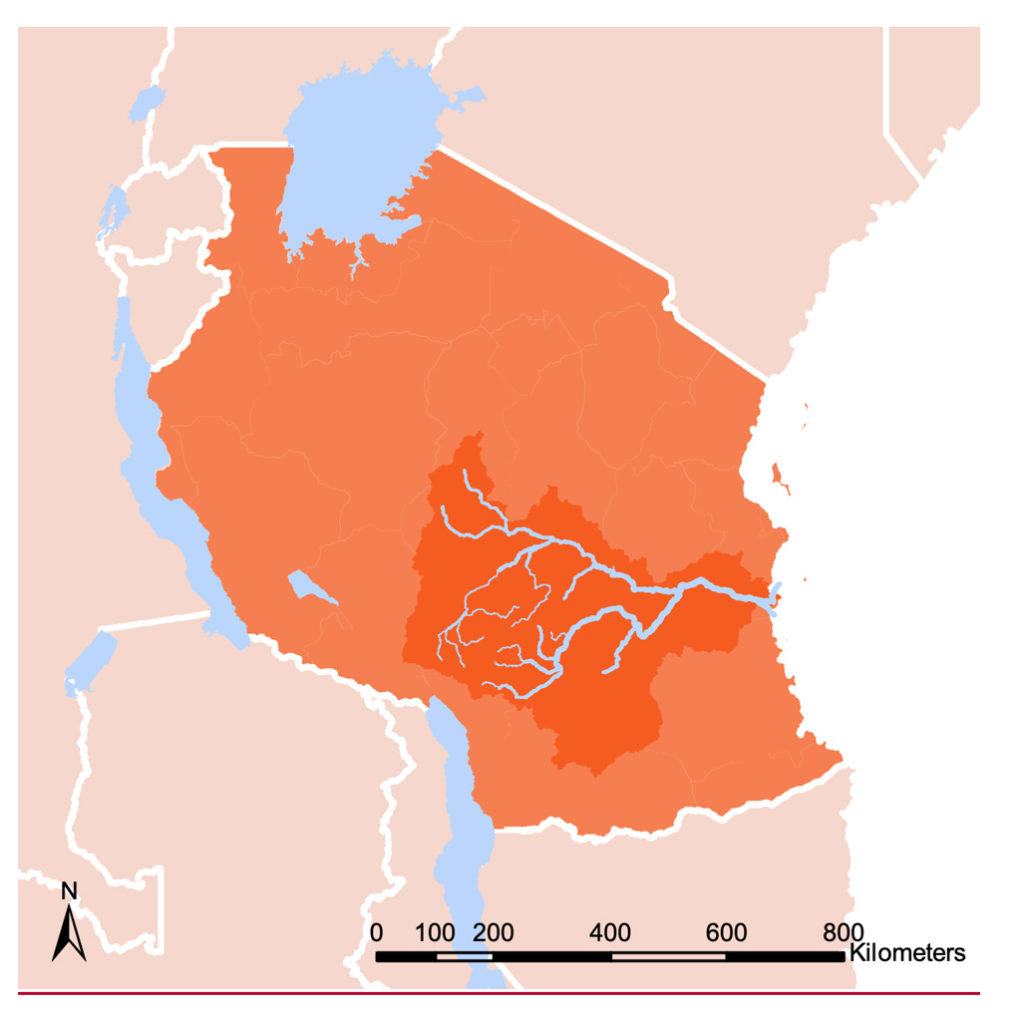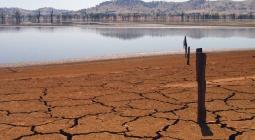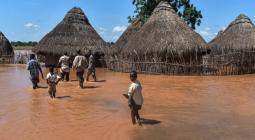Understanding the water-energy-food nexus in a warming climate.

All of nature is infinitely connected. It is therefore no surprise that there are strong interdependencies between the resources that the land surface provides.
The new special report on climate change and land from the Intergovernmental Panel on Climate Change – due to be published tomorrow – tackles the closely-linked topics of land degradation, desertification, food security and greenhouse gas emissions and sequestration.
The importance and strength of such connections have already been explored in an area of research and practise known as the “water-energy-food nexus” (WEF nexus). This concept recognises that water, energy, food and other land-based resources form a complex web where resource use and availability rely heavily on one another.
In this article, we explore what the WEF nexus is, how to minimize trade-offs and maximise co-benefits within it, and what opportunities it offers to address the challenges of a changing climate.
We draw on our ongoing research in Tanzania’s Rufiji River Basin – a case that exemplifies key issues in the WEF nexus – where ambitious development plans cut across several sectors and could be severely limited by future climate change.
Water, energy and food
Describing water, energy and food as a nexus gathered momentum in the late 2000s in response to greater recognition of the need to promote broader-ranging and cross-sectoral approaches in natural resource decision-making.
Important early publications includes a World Economic Forum report entitled “Water Security: The Water-Food-Energy Climate Nexus” and as a background paper to a major conference on the nexus in Bonn 2011 called “Understanding the Nexus”.
There are numerous ways in which the three strands of water, energy and food overlap. For example, water is an essential component in energy production – for cooling, electricity from hydropower, some fossil fuel extraction and biofuels – and energy is used in numerous processes for supplying, treating and using water (particularly as water is heavy to lift and distribute and is energy intensive to heat).
In countries with very high freshwater use, most of the water is used for food production through irrigation, and the energy used in its abstraction and conveyance is often considerable. Estimates for India, for example, suggest that emissions from pumping groundwater for irrigation could be as much as 6% of total national emissions.
Multiple and competing uses for water, energy and food production mean there are important trade-offs that should be considered, often between sectors that traditionally do not coordinate.

WEF linkages are particularly strong at the river basin scale where these competing uses can be found upstream, downstream and sometimes across borders. For example, these uses might include electricity generation (hydropower and cooling), agriculture (irrigation abstractions for food production) and environmental and urban demand. Biofuel production and supporting policies can also lead to both positive and negative effects on water security and food security (pdf). And increased competition for land and water may be an unintended consequence of subsidised biofuels for transport.
Moreover, climate change represents an added layer of complexity in terms of both mitigation and adaptation in the nexus. Water use, and energy and food production generate emissions and climate change will affect water availability and crop yieldswith wide-ranging implications.
For example, adaptation options can be energy intensive – using desalination in areas of water scarcity, for example – which compounds the problem of global warming.
Trade-offs and co-benefits
There are two important complementary dimensions to any research on the WEF nexus. These are understanding and quantifying the physical links between each element, and then unravelling the management and governance structures involved, in order to inform decision-making and policy.
The first – quantifying the WEF nexus and the links within it – tends to dominate academic research on the topic. Many approaches exist, including life cycle analysis (or supply chain analysis), environmental process models, integrated assessment models, and other types of computational modelling.
There is a trade-off here between the complexity and comprehensiveness of an assessment and its usability. It has therefore been argued that an important feature of good WEF nexus models are flexibility and adaptability across contexts and scales. For graphic visualisation of results, Sankey diagrams are popular, as are maps highlighting resource impacts.
The second dimension – understanding of management and governance structures – is essential to move the nexus beyond research to make it relevant and practical for decision-making. However, this area has received much less attention.
Taking the WEF nexus from a concept to something operational has proved difficult, and to date only a few studies have begun to evaluate and provide useful practical insights into the numerous and complex interactions among water, energy and food.
Recognition of these interdependencies pre-date the WEF nexus movement and integration has been called for by researchers many times, yet significant barriers remain. For example, separate institutional structures are often in place for managing water, energy and food and they are not usually particularly compatible.
Tanzania
The issues around the WEF nexus are perhaps best explored using an example.
Our “Uncertainty reduction in Models For Understanding deveLopment Applications” (UMFULA) research project began in June 2015. Its main objective is to improve climate information for decision-making in central and southern Africa, with a particular focus on Tanzania and Malawi.
One of the project’s two case studies concerns Tanzania. The water sector is at the heart of the government’s development plans and programmes, centring on the Rufiji basin – the largest river basin in the country.

The Rufiji produces half of Tanzania’s river flow, supplying water for over 4.5 million people, as well as for irrigation and livestock and for generating electricity through hydropower. Hydropower dams in the Rufiji comprise approximately 47% of the country’s total installed electricity generating capacity.
The basin includes several major wetland systems, formal and informal irrigation schemes, three hydropower reservoirs and areas of high conservation value, including several national parks. Large areas of the basin have been identified by the national government for developing commercial agriculture over the next two decades as part of an initiative called the Southern Agricultural Growth Corridor of Tanzania.

This agricultural expansion will require an increase in irrigation, while the energy sector plans to construct additional dams for hydropower generation.
These objectives depend on abundant and reliable water resources as well as coordinated planning and management. But there will be trade-offs between how much water is reserved for irrigation and how much is released downstream for the hydropower dams. In addition, there are other needs to consider, such as the impact of changes in river flows and their natural fluctuations on wildlife, fishing and tourism.
There are also potential co-benefits – installing small and medium sized hydropower dams upstream, for example, could leave more water for agriculture.
Major project
A major factor has recently re-entered this mix in the form of the government’s decision in 2017 to build the Rufiji Hydropower Project at Stiegler’s gorge on the Rufiji main river. This will include a 134-metre dam height with a reservoir storage capacity for 34bn litres of water. The dam will be the fourth largest in Africa and ninth largest in the world.
The foundation stone for the project was laid just a few weeks ago, kicking off construction that is due to be completed in 2022.
Whilst hydropower is considered relatively clean energy – the impact of the dam on downstream river flows will be strongly determined by the reservoir outflow release policy.
The proposed project has also received international criticism because of its location in the Selous Game Reserve, which is a World Heritage Site, where the reservoir would flood around 3% of the reserve. The UN Educational, Scientific and Cultural Organization (UNESCO) describes the reserve as “an immense sanctuary” for “large numbers of elephants, black rhinoceroses, cheetahs, giraffes, hippopotamuses and crocodiles”.
Governance of the nexus
Research on governance shows that bringing together policies across the WEF nexus is not straightforward.
As part of UMFULA, we reviewed policy documents and used interviews with a range of managers in the WEF sectors in Tanzania to examine how climate change is being incorporated into water, energy and agriculture sector policies, as well as the extent to which coordinated action is present across sectors.
In general, we identified greater progress in the agriculture and water sectors than the energy sector – which tended to focus on diversification through increased coal- and gas-powered electricity. This was in part motivated by the threat of drought disrupting electricity generation from hydropower and potentially undermines mitigation activities by other sectors.

Publication of Tanzania’s National Adaptation Plan of Action (pdf) in 2007 also provided an opportunity for greater integration of climate change into policies in different sectors. Yet, despite policy statements, in practice cross-sectoral collaboration has not been strongly evident, and has largely been confined to ad hoc projects and activities.
Barriers to coordination were related to institutional structures, limited resources, issues around cost recovery and free-riders in departments with overlapping responsibilities and a need to protect roles and responsibilities to ensure future budgets.
The IPCC land report and the WEF nexus agenda together make a strong case for integrated approaches, and our work in Tanzania highlights the very real need for coordination. But it also recognises there may be significant barriers and additional costs associated with extra consultation and complexity.
Moreover, a nexus approach needs to achieve internal recognition and ownership by relevant agencies – and making the jump to implementation requires political will and trade-offs that may need to be addressed on a broader scale.
*Prof Declan Conway is a professorial research fellow at theGrantham Research Institute on Climate Change and the Environment at the London School of Economics; Dr Christian Siderius is a research fellow at Grantham; and Prof Japhet Kashaigili is head of the department of forest resources assessment and management at the College of Forestry, Wildlife and Tourism at the Sokoine University of Agriculture in Tanzania.
7 August 2019
Carbon Brief




